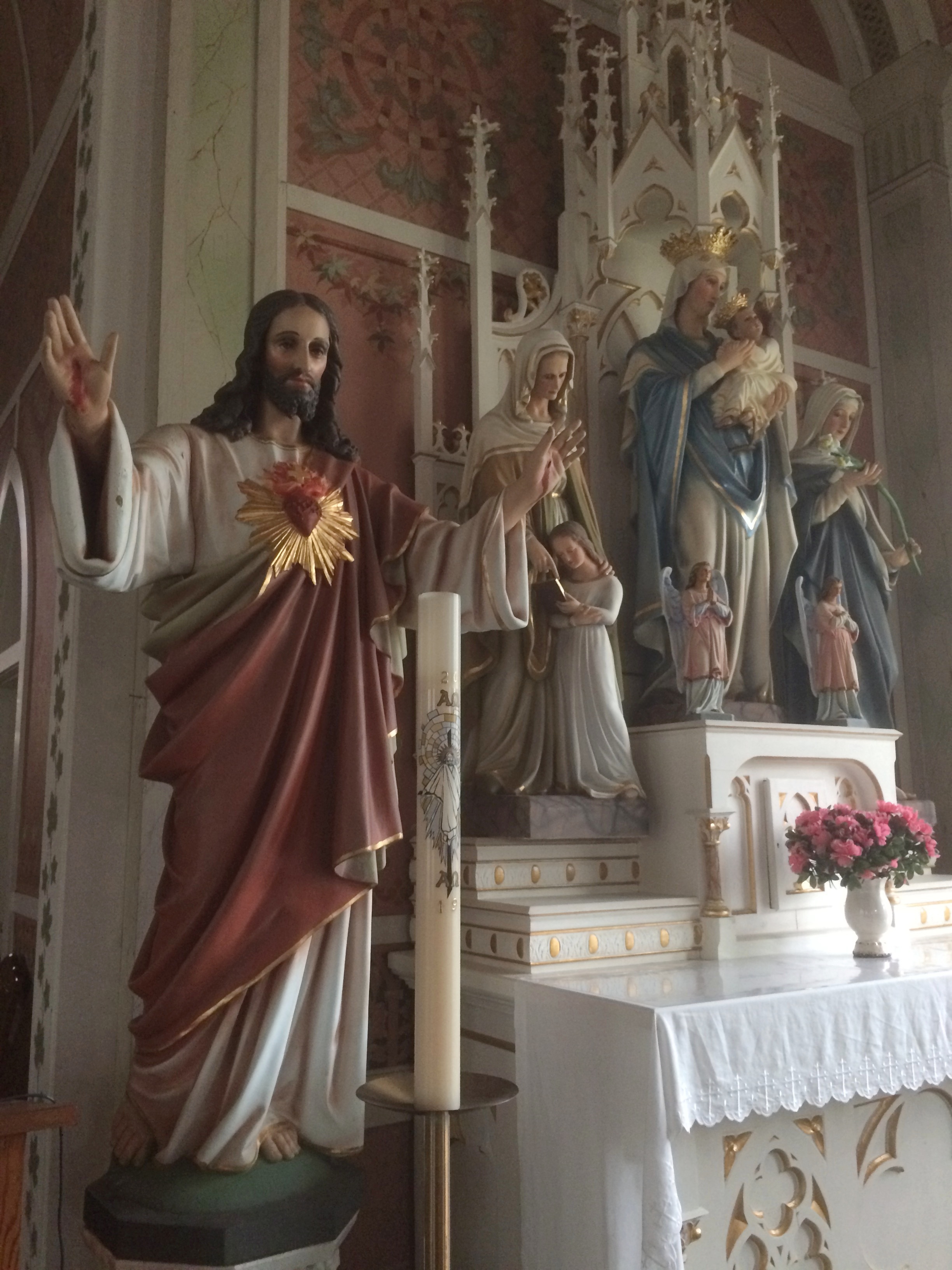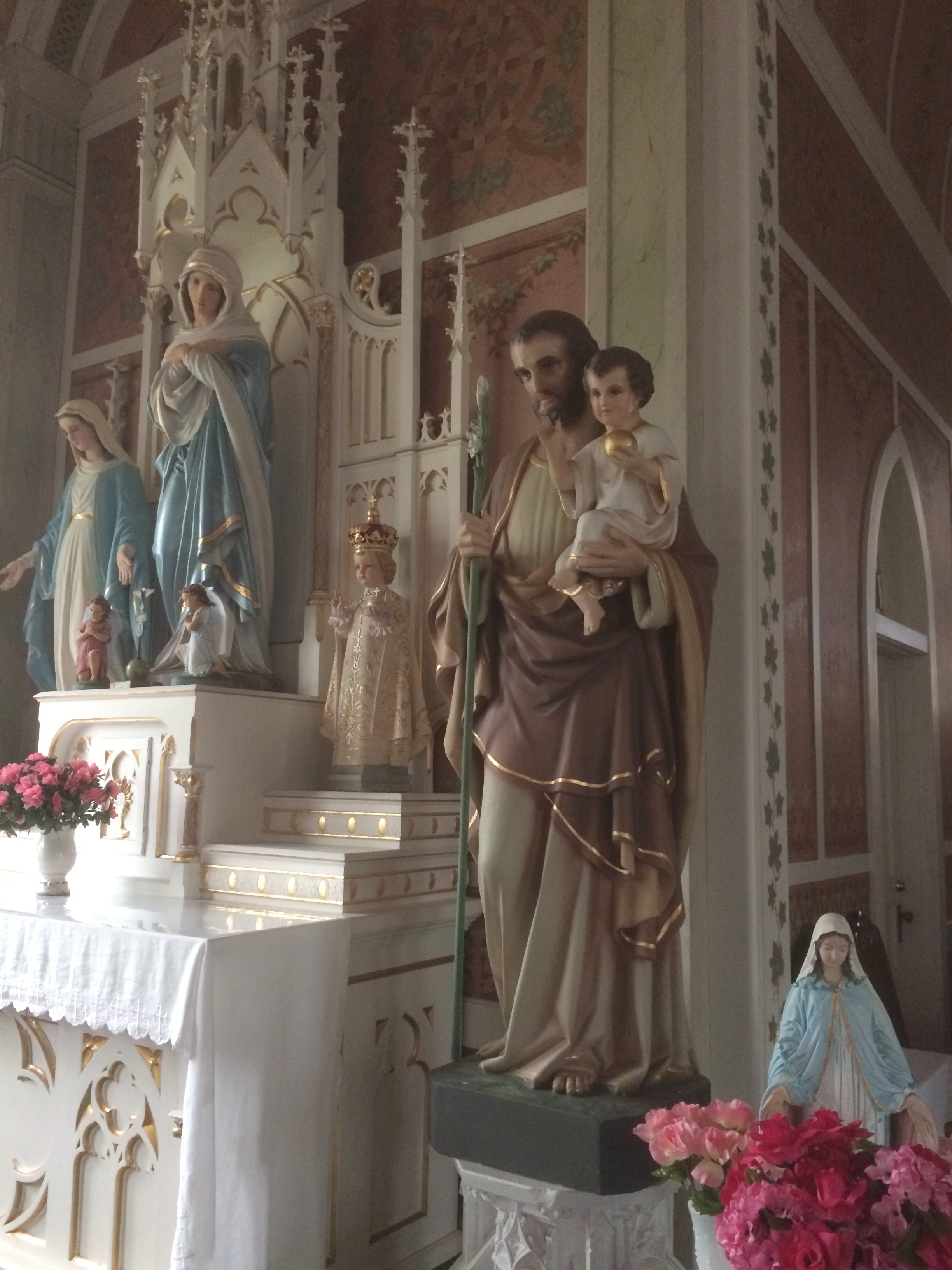Just outside the hamlet of Serbin, Texas, if you follow your map but also keep your eyes peeled — because the map isn’t quite accurate — you’ll find yourself outside St. Paul Lutheran Church. The exterior is nice, but isn’t particularly distinctive.
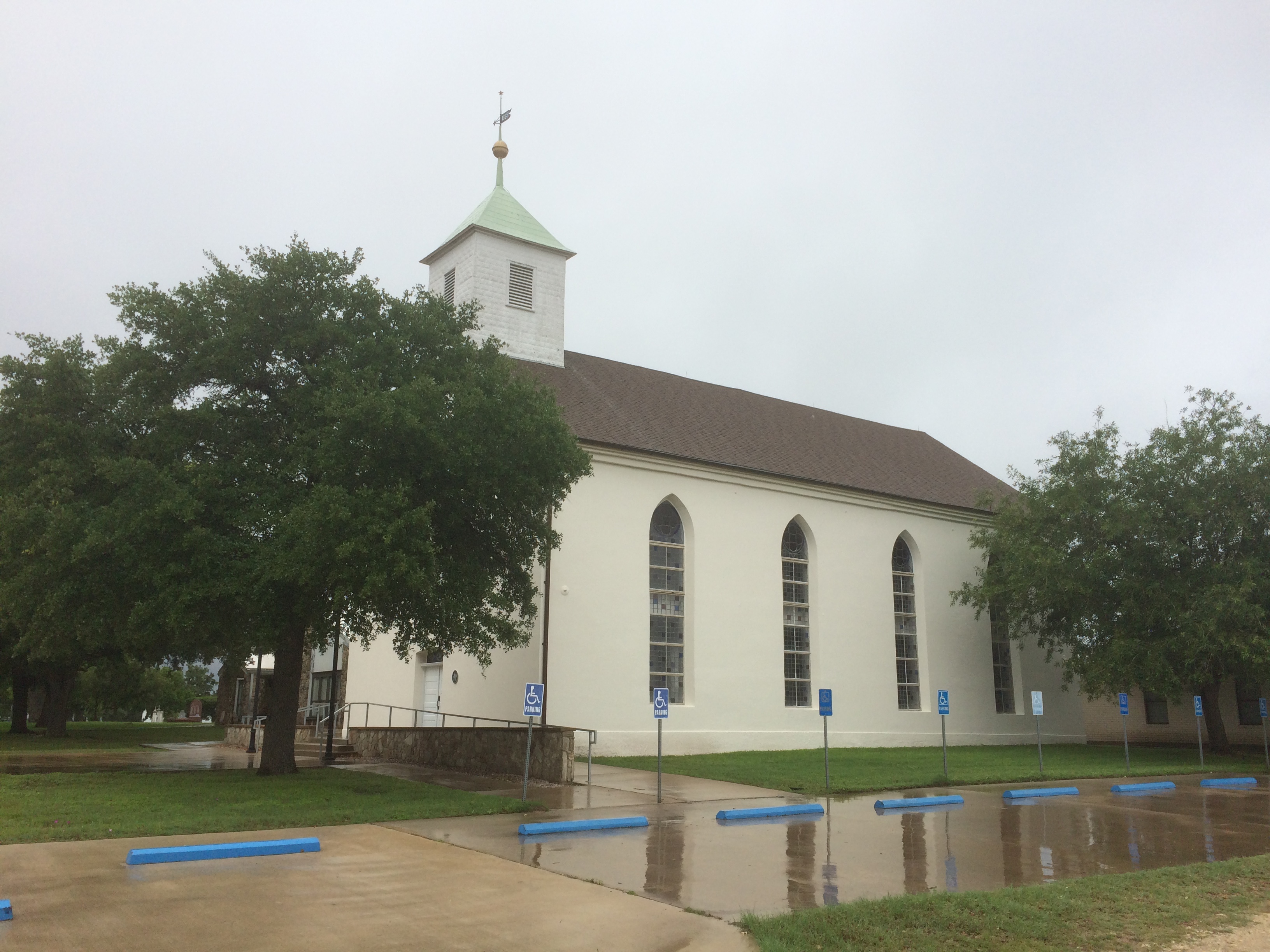 Inside is a different story.
Inside is a different story.
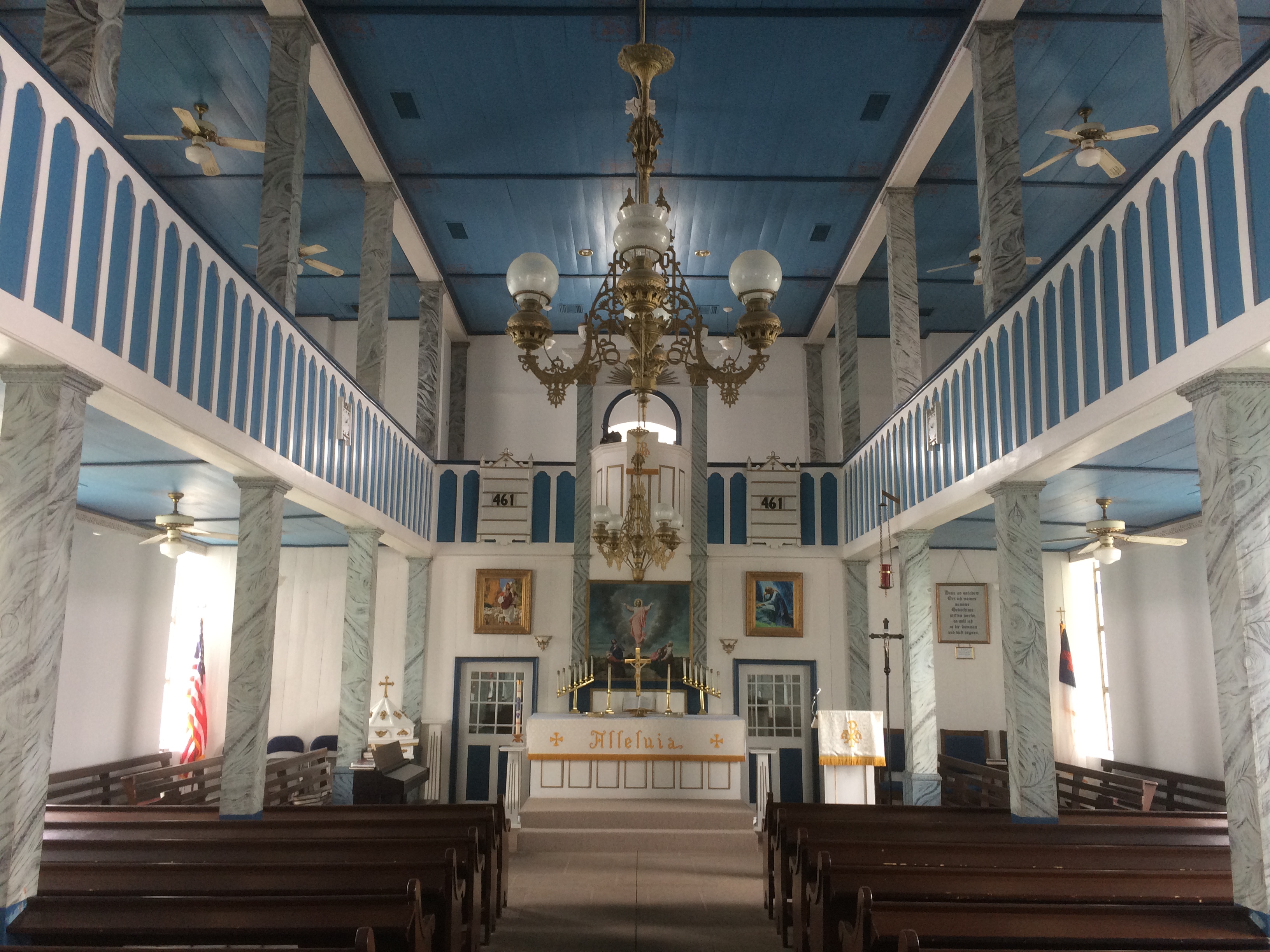
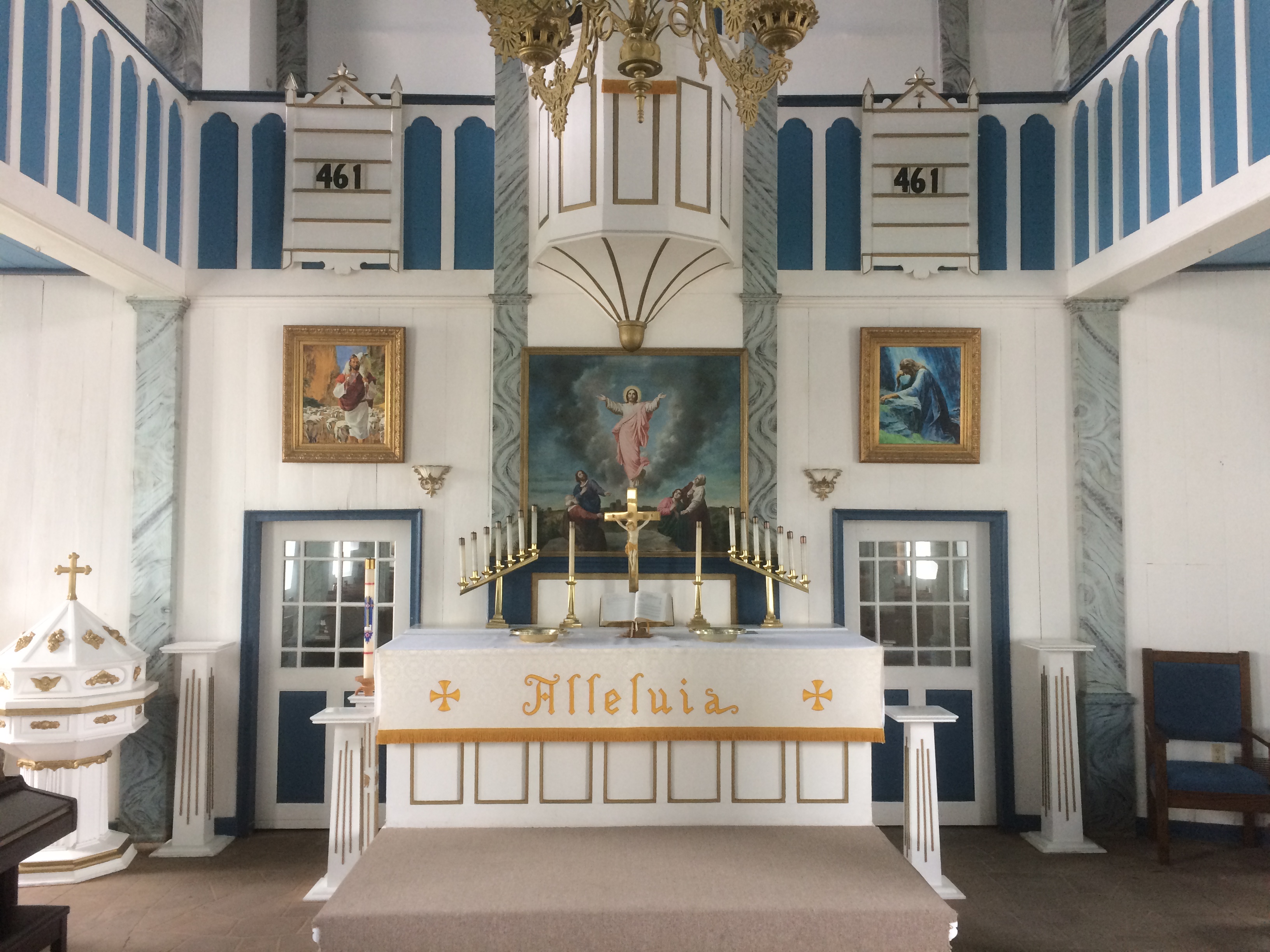
 St. Paul is one of the Painted Churches found in Central Texas. In its case, the church was built in the late 19th century, but not decorated until 1906, when the congregation itself took up the task.
St. Paul is one of the Painted Churches found in Central Texas. In its case, the church was built in the late 19th century, but not decorated until 1906, when the congregation itself took up the task.
“Cross the threshold of these particular Texas churches and you’ll encounter not a simple wooden interior but an unexpected profusion of color,” says KLRU, which aired a documentary on the churches nearly 20 years ago.
“Nearly every surface is covered with bright painting: exuberant murals radiate from the apse, elaborate foliage trails the walls, wooden columns and baseboards shine like polished marble in shades of green and gray. These are the Painted Churches of Texas.
“Built by 19th-century immigrants to this rough but promising territory, these churches transport the visitor back to a different era, a different way of life. Inscriptions on the walls read not in English, but in the mother tongue of those who built them: German and Czech.”
I’ve wanted to visit the Painted Churches for some time now, but something or other has always make it inconvenient to do so. Still, potential destinations sometimes get under your skin, so I designed part of this particular driving trip to scratch that longstanding itch.
Heading south from Waco on U.S. 77 on May 11 in sometimes heavy rain — sheets of rain — we passed through such towns as Rosebud, Cameron, Rockdale and Giddings, and near the wonderfully named Old Dime Box. St. Paul Lutheran is near Giddings and the first of the four churches we visited.
Further south, in the town of Ammansville, is St. John the Baptist Church. We went there next.
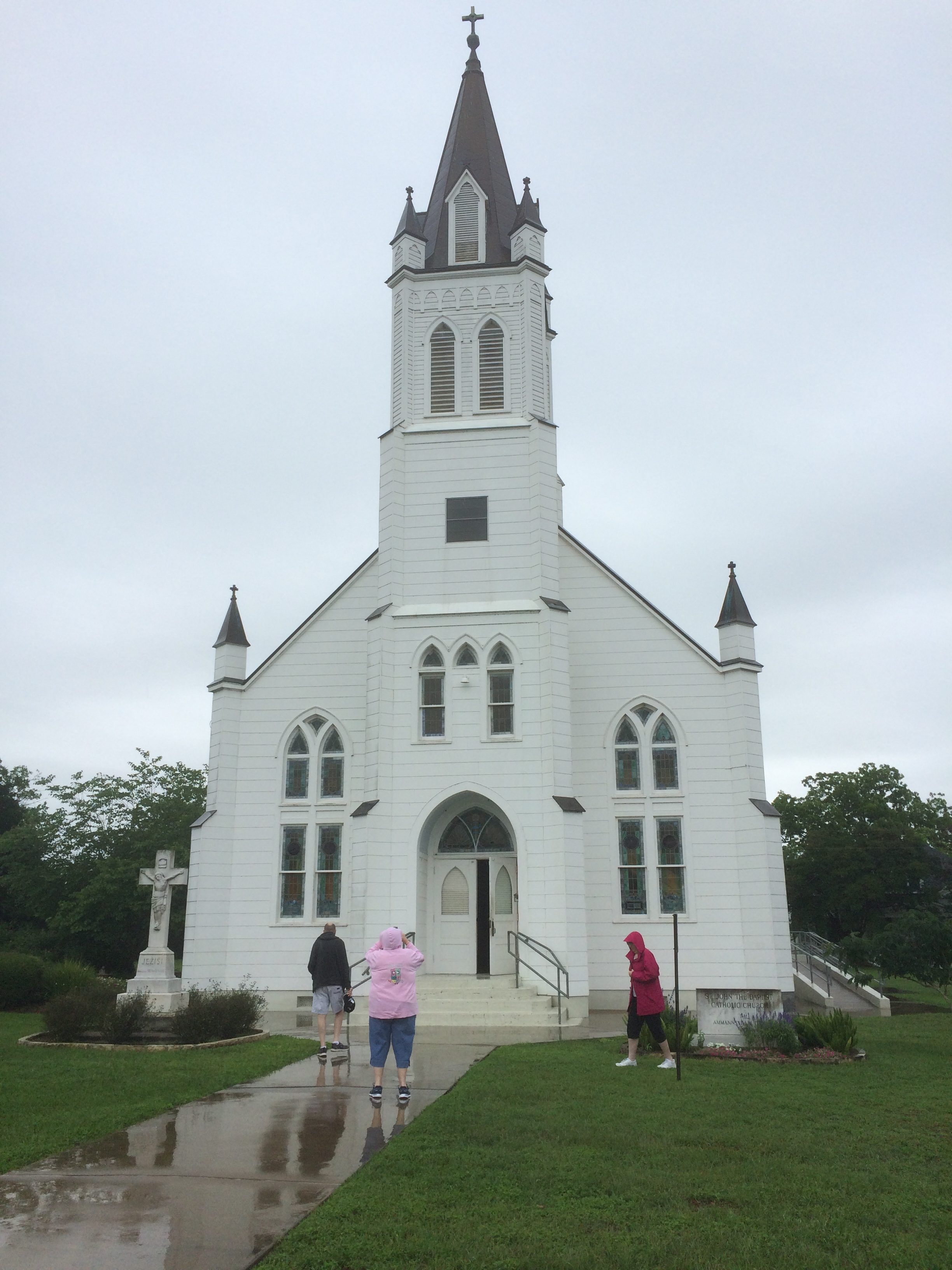
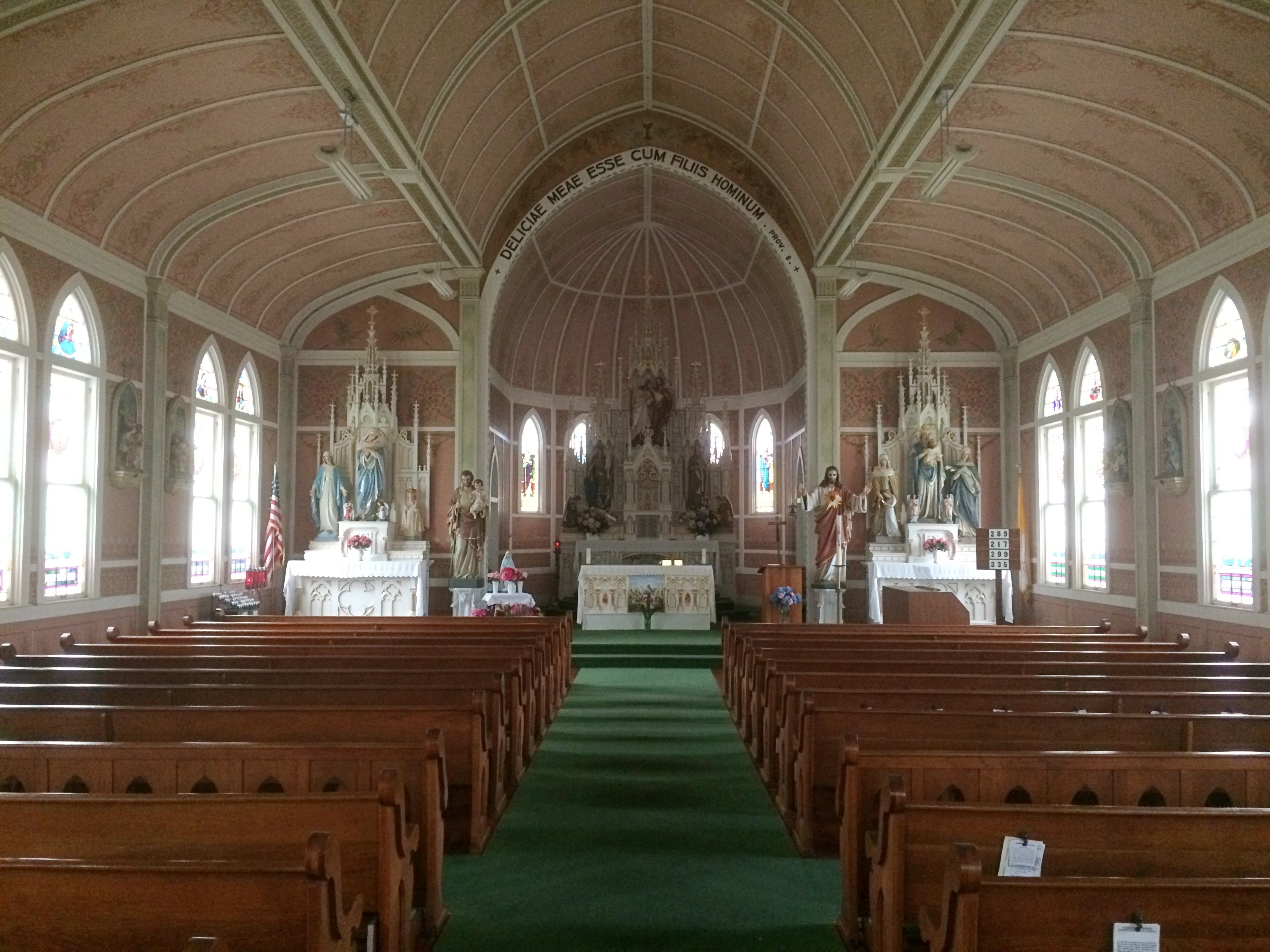
A cemetery is adjacent to St. John the Baptist, which was built in 1918 and painted the next year by one Fred. Donecker of San Antonio, who seemed to specialize in church interiors.
 St. Mary’s, also known as Nativity of Mary, Blessed Virgin, is in High Hill, and was built in 1906.
St. Mary’s, also known as Nativity of Mary, Blessed Virgin, is in High Hill, and was built in 1906.
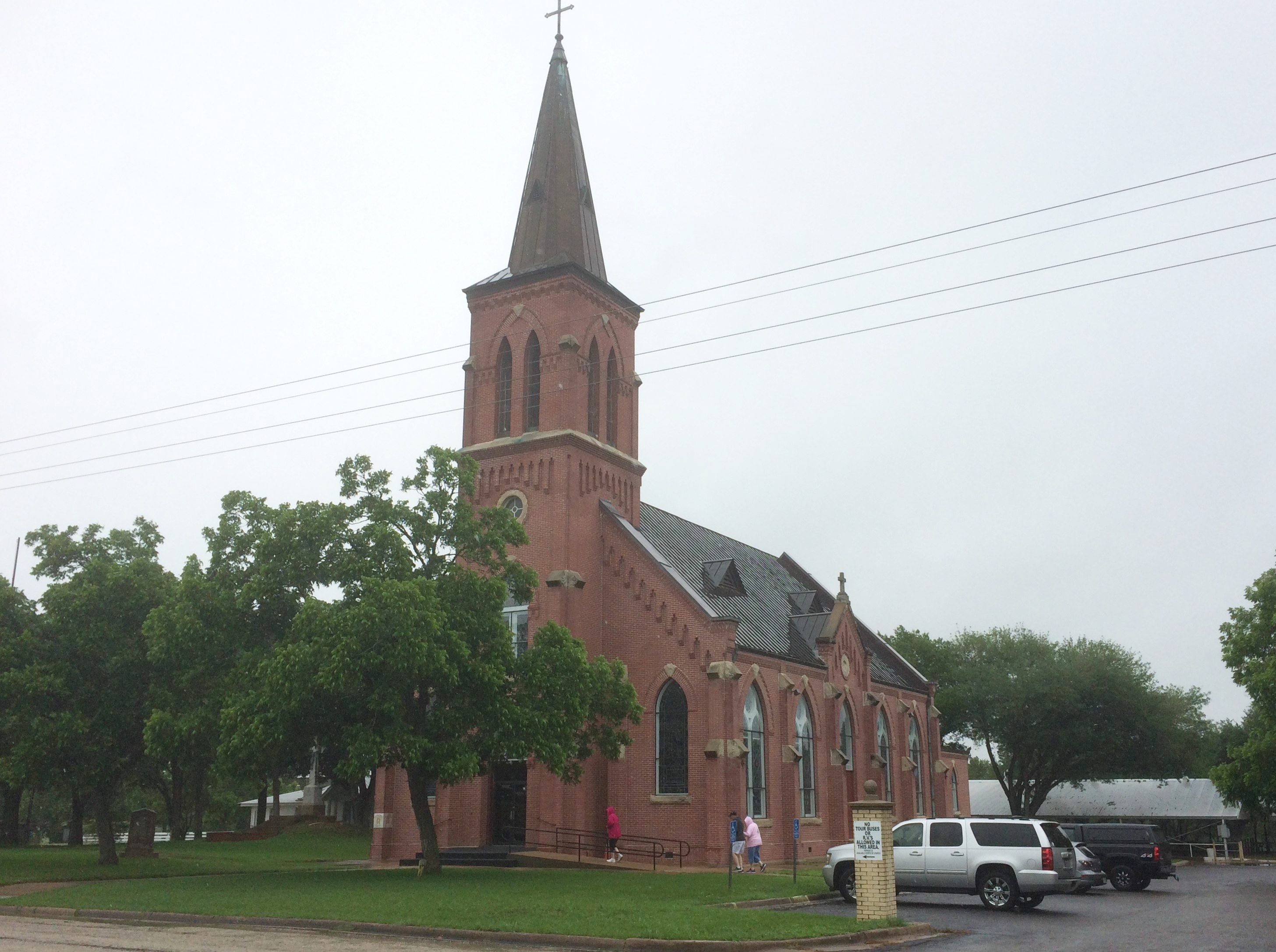 St. Mary’s billed itself as the Queen of the Painted Churches, and it was indeed gorgeous. Unfortunately, it was also dark inside. These pictures capture a bit of its ornate interior.
St. Mary’s billed itself as the Queen of the Painted Churches, and it was indeed gorgeous. Unfortunately, it was also dark inside. These pictures capture a bit of its ornate interior.
St. Mary’s stained glass captured a fair share of light, even on a cloudy day.
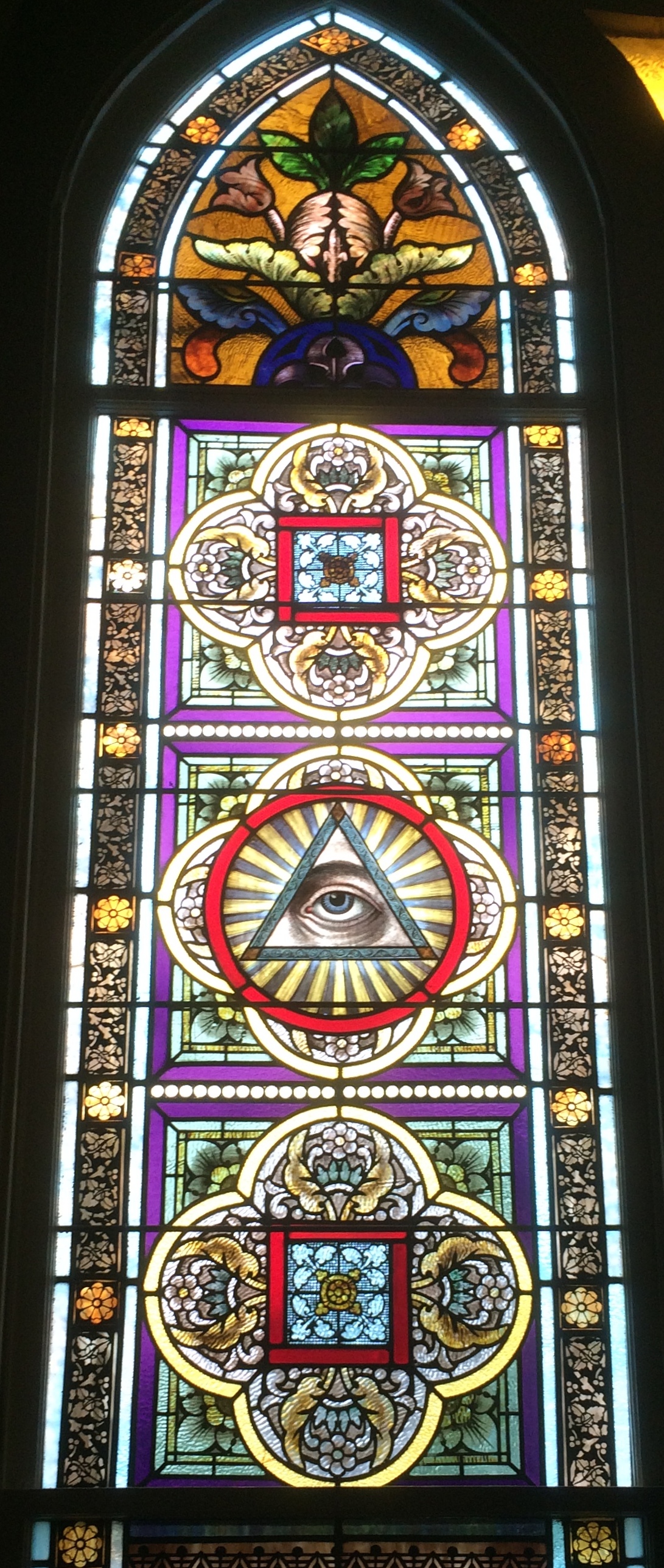
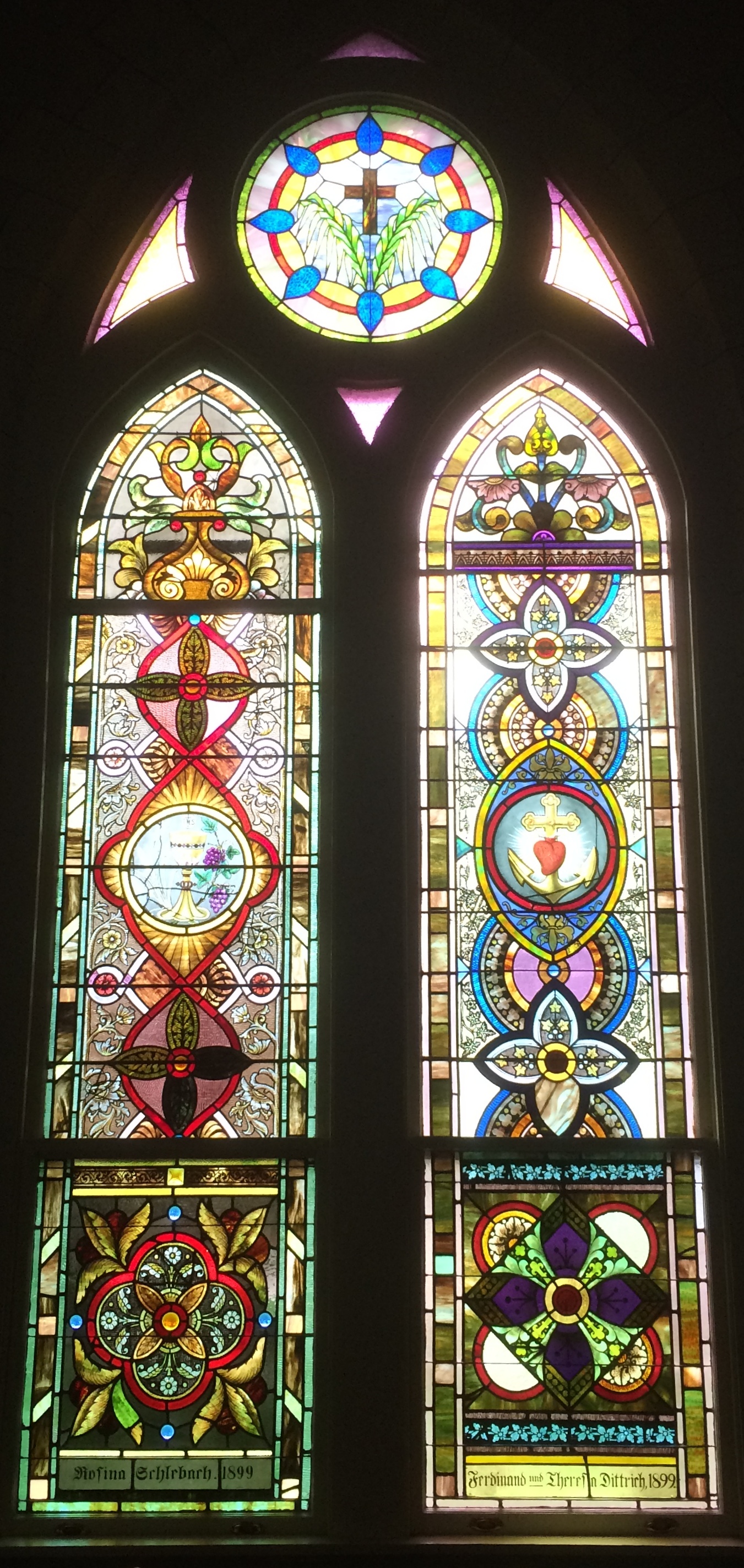 Finally, near Dubina, we visited Sts. Cyril and Methodius Church.
Finally, near Dubina, we visited Sts. Cyril and Methodius Church.
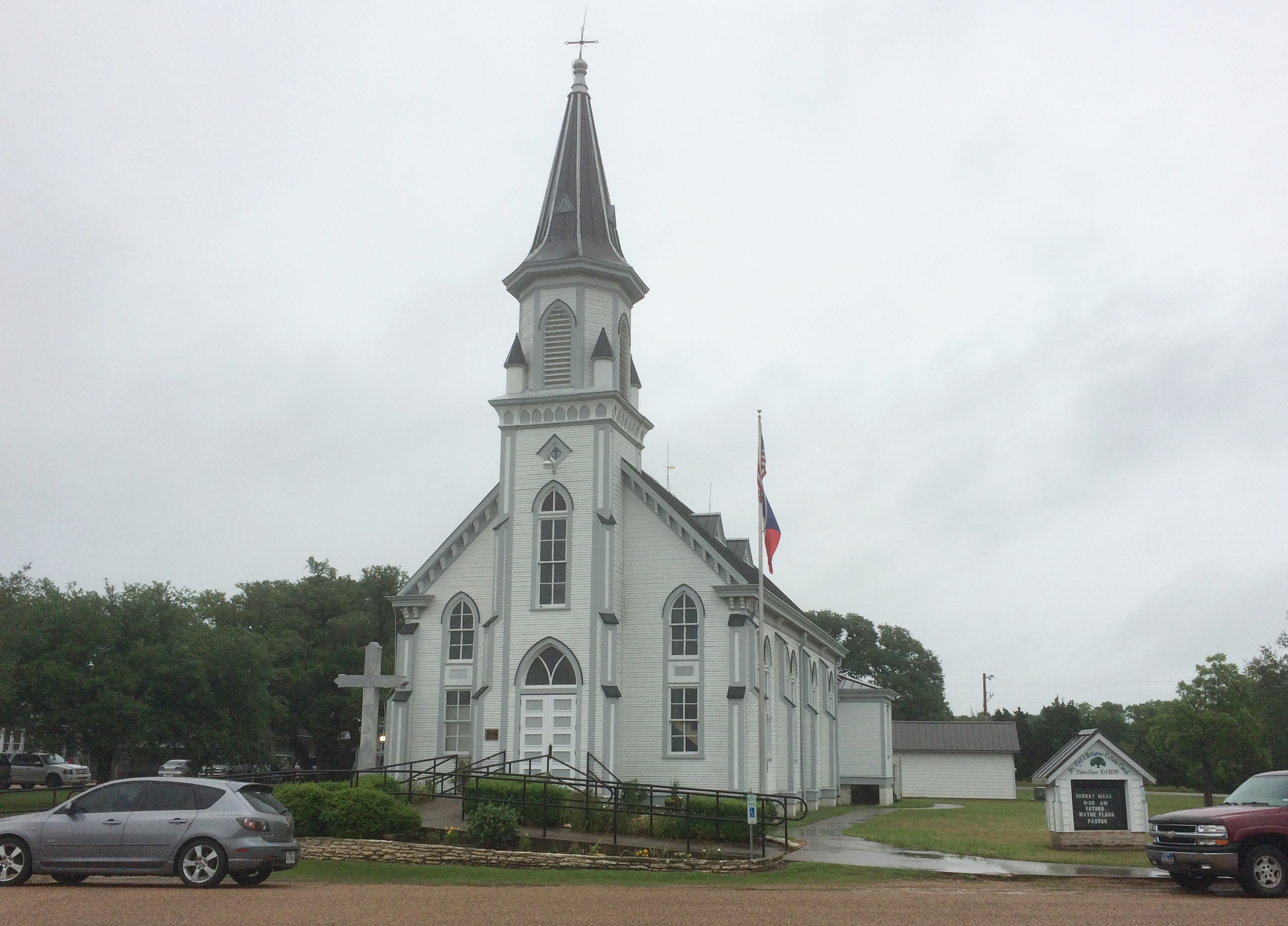 Artist unknown (1909), but he did a fine job.
Artist unknown (1909), but he did a fine job.
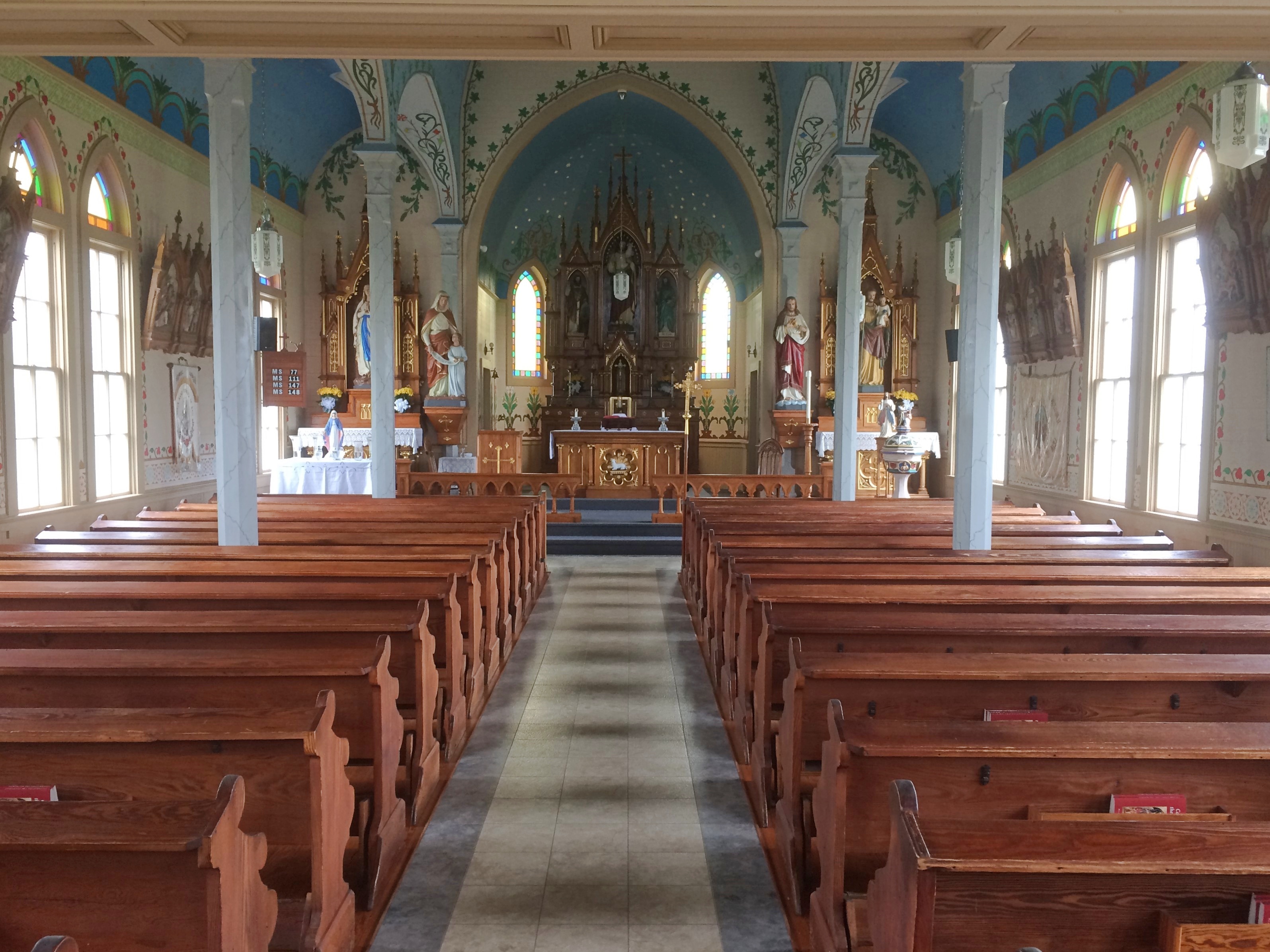 By some counts, there are as many as 20 Painted Churches in Texas, so our visit wasn’t comprehensive. But after four or five such structures, you begin to get your fill of even the most beautiful ecclesiastical spaces anyway. Maybe I’ll see some of the others some other time.
By some counts, there are as many as 20 Painted Churches in Texas, so our visit wasn’t comprehensive. But after four or five such structures, you begin to get your fill of even the most beautiful ecclesiastical spaces anyway. Maybe I’ll see some of the others some other time.
